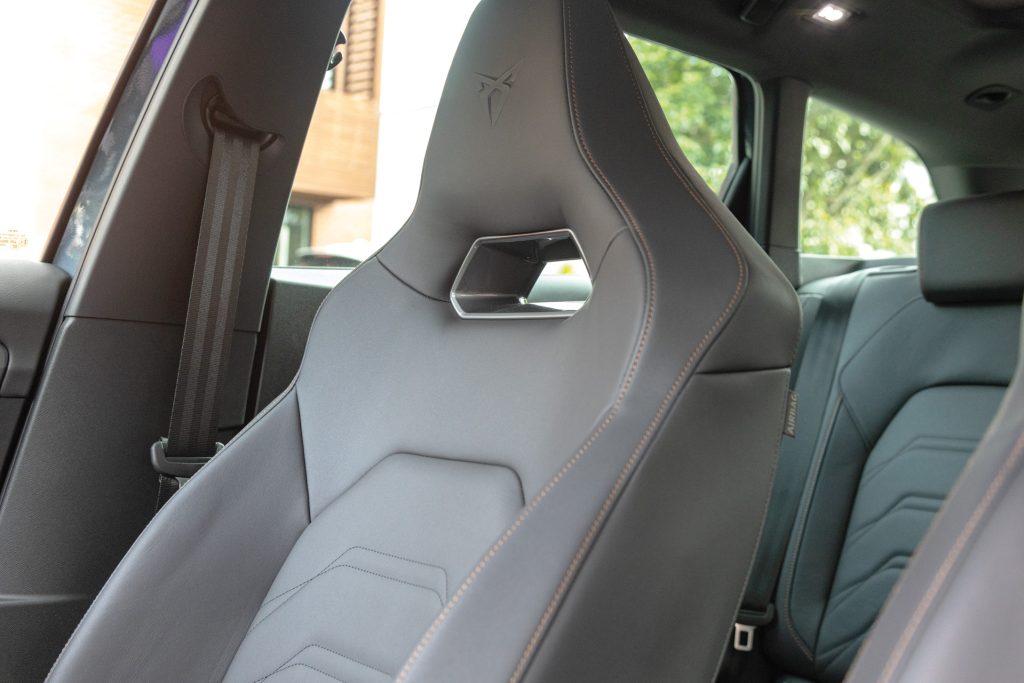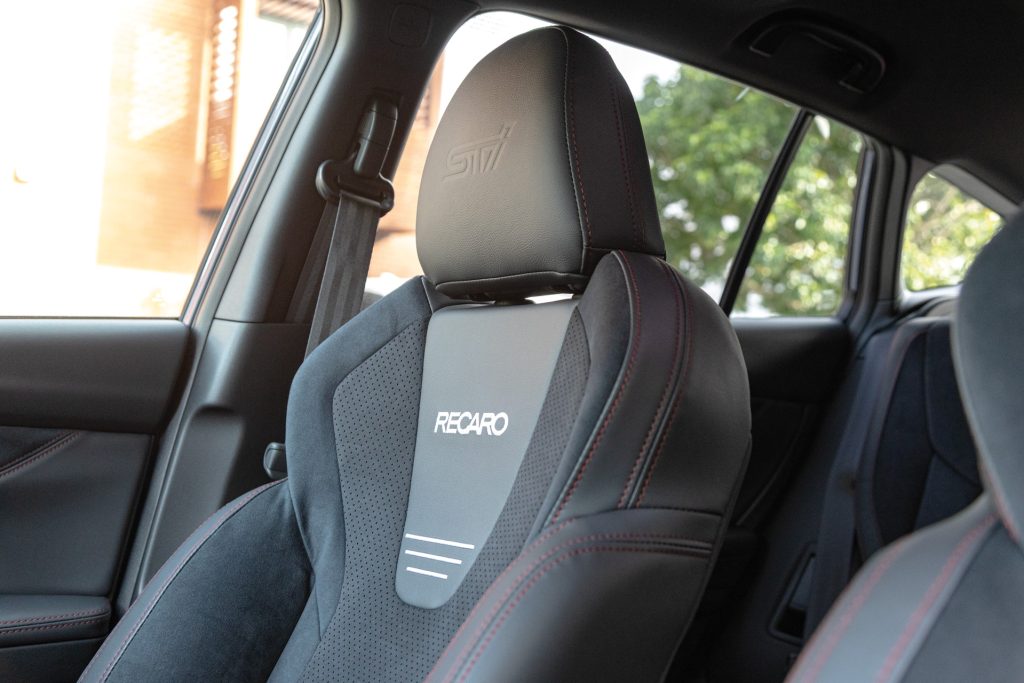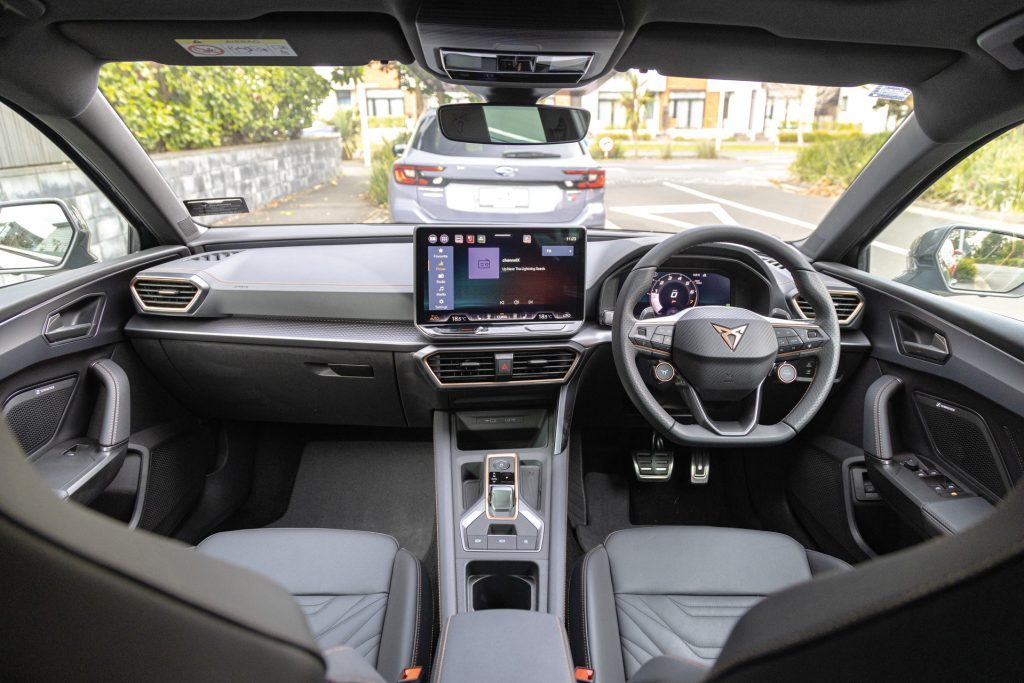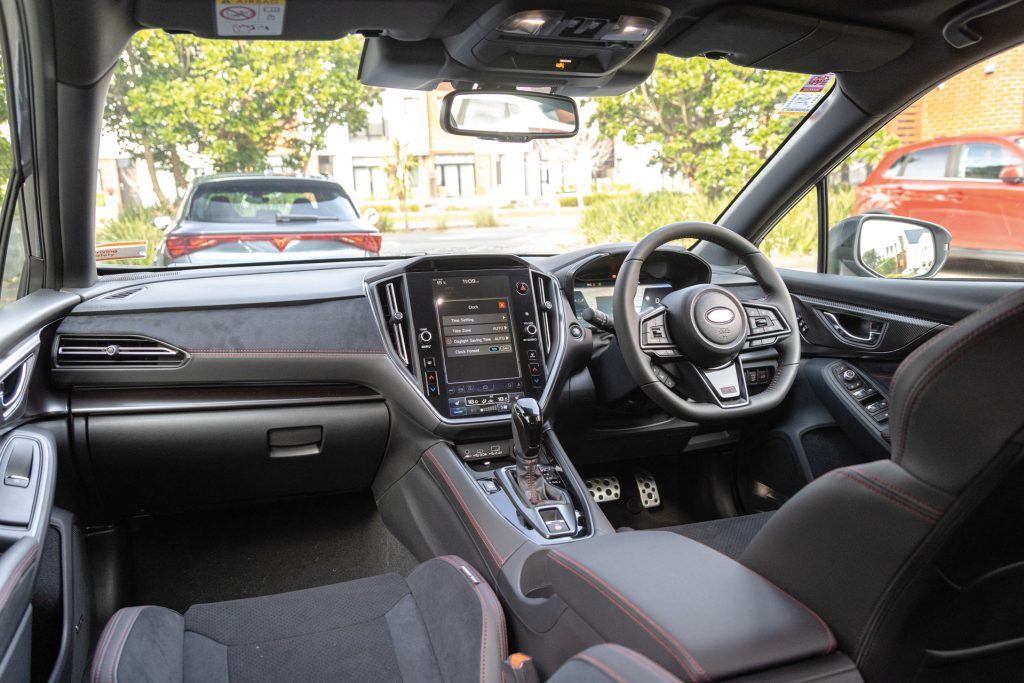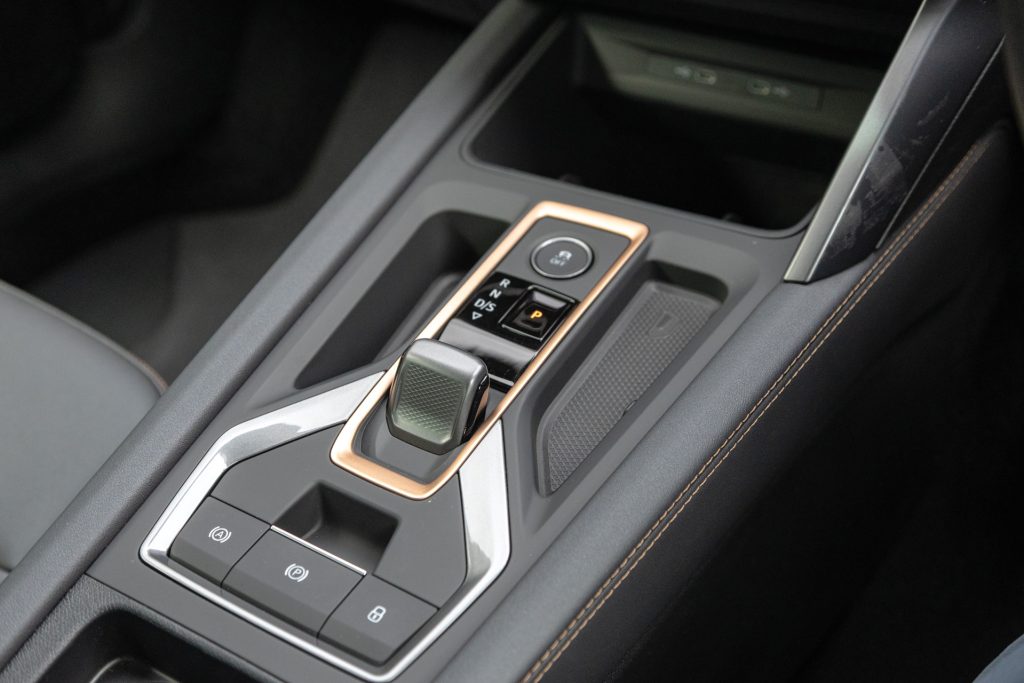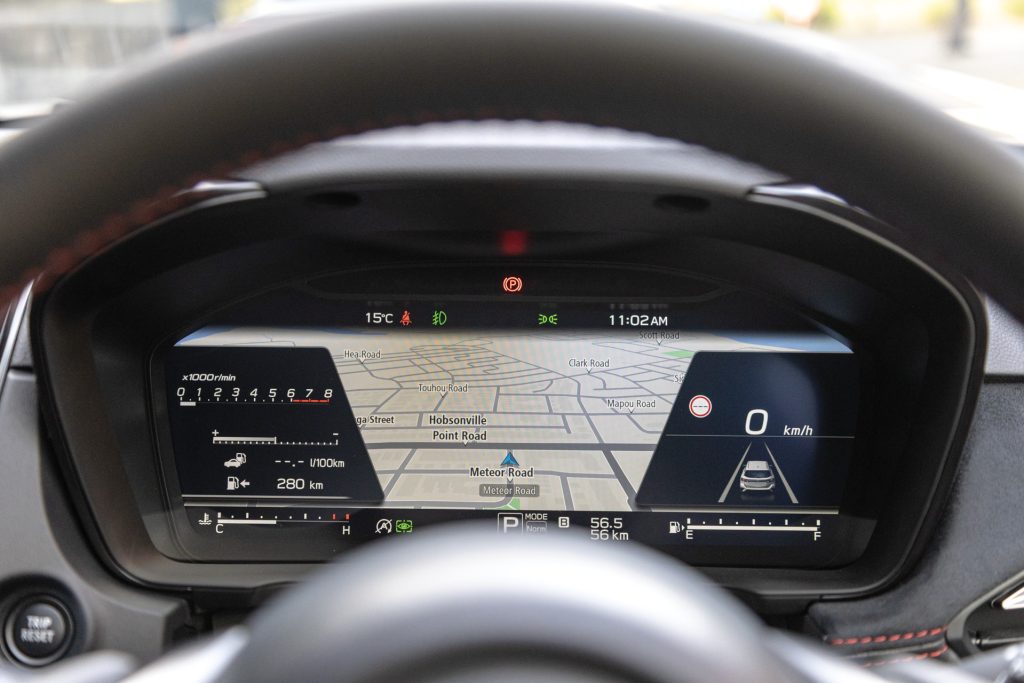2025 Cupra Leon VZ Sportstourer vs Subaru WRX GT tS Wagon Comparison
Words: Kyle Cassidy | Photos: Alex Schultz
Need a vehicle that is practical but also delivers on the performance front? An AWD, turbocharged station wagon sounds like the go. But which to choose? Here we compare the Subaru WRX GT with the Cupra Leon Sportstourer VZ.
We are a little guilty of liking a quick wagon around here. These satisfy a range of needs, being practical and are better dynamically than a sporty SUV. While the majority of these hasty haulers command hefty six-figure sums, there are a few more affordable types, if you look hard. These two, the Cupra Leon Sportstourer VZ and Subaru WRX GT wagon are good examples of the breed. And they are both all-wheel drive, turbocharged wagons with two-pedal convenience. They are well outfitted and are sized to swallow the family and whatever else they might be bringing along. Yet while these two are similar, they have their differences. Here, we will decode their characters to help decide which might be better for your particular needs.
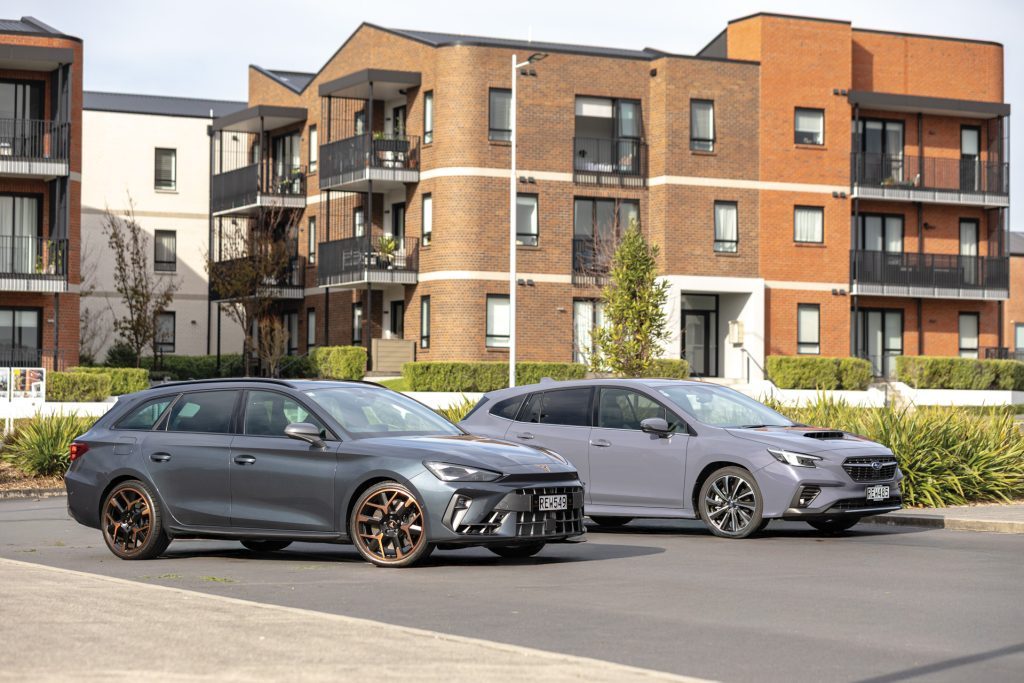
Similar but not the same
These two are not new, rather updated versions of models that have been around for a few years. In the Subaru corner is the (very mildly) reinvigorated WRX wagon. While it’s not quite the same as the WRX sedan (it’s really a re-badged Levorg) they share running gear. The GT tS is $69,990, fitted with a 202kW/350Nm 2.4-litre boxer turbo and runs a permanent AWD set-up with an active torque split. It has variable damper tech, while its auto is of the CVT type. But don’t write it off just yet.
The Leon Sportstourer VZ has had a proper makeover, sporting a new look front and rear, a revamped interior and a power up under the hood. The 2.0-litre four now makes 245kW and 420Nm, still managed via a seven-speed twin-clutch, though the on-demand AWD has been given a boost with a torque-splitting rear diff. Adaptive dampers are standard too. The price is steeper now, kicking off at $84,900, almost $20k more than when it landed in 2021.
The Cupra has a bit more flash and dash inside with its copper highlights and stitching, textured surfacing and ambient lighting. We preferred the Cupra’s seats as they offer more adjustability, with a better balance of comfort and support. WRX pilots get suede-lined Recaros that grip purposefully. Both have configurable dials that can put the sat nav map front and centre, though we tend to gravitate to the display with a good old tachometer present.
Some more storage in each wouldn’t go astray, and was that a CD stacker in the centre console storage of the WRX? How retro. The absence of a charge pad in the Subaru seems odd, but the finishing is quality (lined pockets and soft touch surfaces in more places), if the decor is a little drab compared with the Cupra’s. The Subaru has a larger, portrait-oriented screen that gives things a bit more space to breathe, the touch points friendlier, and there are a few more hard buttons to make operations that bit easier. The WRX also has multiple cameras to ease parking, but given the sizeable screen, the image could be much larger. Cupra’s infotainment system is big and bold, with a more modern layout and look compared with the Subaru’s. But some of the things you might expect on an $85k car are extras like the full-length glass roof, matrix LED lights, and sat nav, while there’s no surround view cam.
Practical performance
There’s good load space in each of these wagons, the Subaru hold just that bit wider and longer. The rear seats in each fold flat, conversion made easier by way of remote levers. A bit annoying that there is no external release button on the Cupra, both featuring a powered tailgate. There’s a real spare in the Subaru, none in the Cupra with a subwoofer in the wheel well, but it helps boost the bass of the Sennheiser system.
For those in the rear, there’s a smidge more room in the Subaru, but the Cupra is no less practical as a five-seater. The Leon gives its passengers USBs and another zone of ventilation, while Subaru treats its guests to seat heaters, soft door tops and even the door pockets back here are nicely lined.
While the Leon sits lower on bigger rims, it manages to ride well, accommodating even in Comfort mode. Quick steering and a light action see it being as easy to helm round town as the much tamer V model. Much the same can be said about the WRX GT. Perhaps it rides a smidge better overall, and has better sound proofing.
Both have AWD which ensures the abundant torque and power are well grounded, and a sure-footedness that even the best front drivers can’t quite manage, especially during wintry weather. The Cupra, with a strong spread of torque is easy around town, pulling well in second gear from down low (handy at intersections), the trans a good operator too. It’s quick off the mark, getting away with the proper punch you’d expect.
The WRX’s CVT adds a layer of refinement for city driving; it’s always smooth. While it doesn’t launch off the mark with the same vigour as the Cupra, (one mark against the CVT) we like how the WRX perks up around 2500rpm, with an old fashioned turbo kick.
The Cupra is better on gas, averaging 11L/100km to the Subaru’s 13, although the WRX had delivery miles on the clock, so should improve with age. Each has a layer of safety minders to keep you honest. The WRX’s driver monitor sounds off occasionally, and at times you’ll want to switch out the lane keeping function in each, which is easily done.
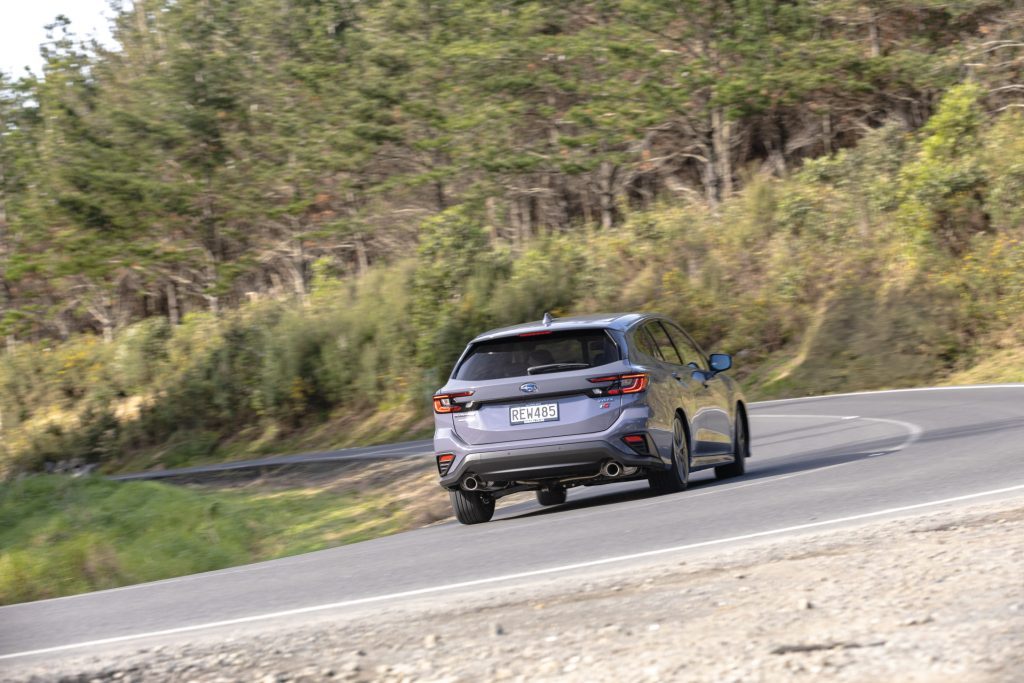
Which is the driver’s car?
Each has common drive mode settings, with a customisable menu to amp up the response, beef up the steering weight and stiffen the suspenders. The Cupra adds more set-up options; you’re able to really wind the suspension down tight (or soften it right off) all done via the touchscreen. It also has a Drift mode, enabled by the torque splitting rear diff, which is able to apportion torque between the rear wheels to help it get slidey (in the right hands, in the right conditions).
Of the Leon’s drive modes, Sport is good for the road, with more breathing room for the bumps, while the control remains solid. If you really like things locked down, the Cupra setting does that, but expect more jostling about over the rougher bits. Along with capable steering, the trans does the right things with the ratios and the brake pedal has a solid action too, with good retardation. The more interesting aspect of the VZ is the torque splitter diff that really defines this as the more focused drive.
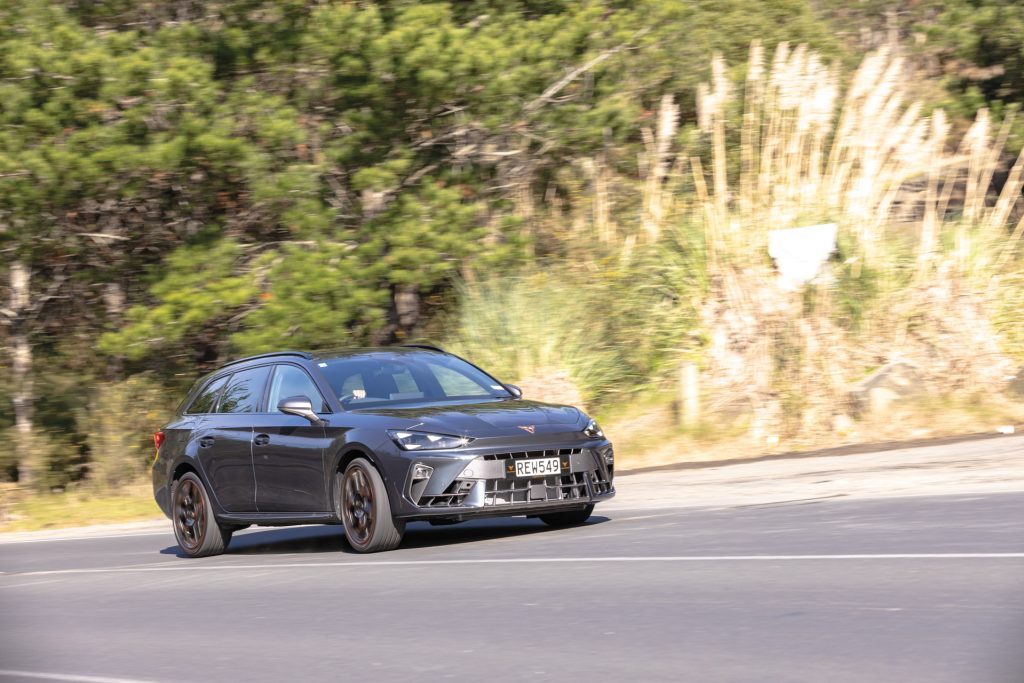
Through the bends the Subaru holds on well, up to a point. It can’t quite match the cornering stick of the Cupra, the front tyres feeling the strain earlier, and you are forced to ease the gas off a notch. The Cupra’s diff drives its outside rear wheel harder, pushing the nose into the corner, so you can keep adding gas rather than holding off. This also helps rotate the rear end just before the exit, firing it out even harder. It makes for a pointy, more nimble machine. And for a four-wheel drive car, it’s an interesting drive. It’s got that Cupra character we like. On a circuit, we’d imagine the Drift mode would be fun, the rear end getting even livelier still.
The WRX GT steers with a good connection and directness. Its firmest suspension setting is okay on road, though it’s not as controlling as the Cupra’s. The WRX isn’t quite as fast, with less thrust off the curves, yet it’s still comfortably quick enough. It is set more toward the GT side of the ledger, but doesn’t disappoint either. The CVT in the S mode does a darn good job of mimicking a ‘proper auto’. Its stepped action sees it change up as the engine nears 6000rpm, and will smartly hold its ratio if you lift off, while ‘downshifting’ when you’re on the brakes. It all makes for an improved response when you get back on the gas. The WRX is a bit quieter on road, the ride in Comfort a touch more soothing. The Subaru’s engine isn’t the most charismatic, not sounding as edgy here, nor revving as hard or as high.
So what’s it to be?
Those after a practical ride with a turn of pace but for whom outright performance is not top of mind, the WRX GT tS will fit that bill nicely. It’s the more refined operator day to day, with that bit more space on offer. That it’s some $15k cheaper makes it good value as well. The Leon Sports Tourer VZ is the more focused drive however. It’s devilishly quick and entertaining, much more so than the $150k Audi S5. White it’s not as accessible as it once was with its higher price, it is a better car now.
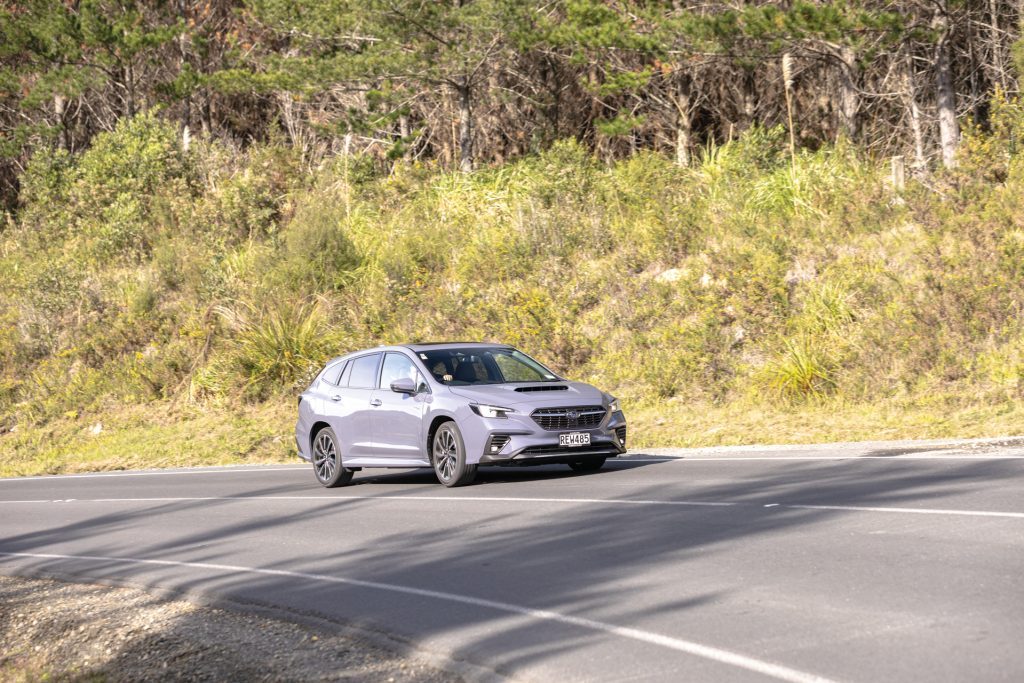
Cupra Leon Sportstourer VZ
$84,900 / 8.3L/100km / 189g/km
0-100 km/h 4.85s
80-120 km/h 2.91s (82m)
100-0 km/h 34.67m
Speedo error 98 at an indicated 100km/h
Ambient cabin noise 76.9dB@100km/h
Engine 1984cc / IL4 / T / DI
Max power 245kW@5600-6500rpm
Max torque 420Nm@2100-5500rpm
Drivetrain 7-speed twin-clutch / on-demand AWD
Front suspension Mac strut / sway bar
Rear suspension Multilink / sway bar
Turning circle 10.6m (2.1 turns)
Front brakes Ventilated discs
Rear brakes Discs
Stability systems ABS, ESP, TV
Safety AEB, ACC, BSM, LDW, RCTA, ALK, AHB
Tyre size f/r-235/35R19
Wheelbase 2686mm
L/W/H 4656 / 1799 / 1439mm
Track f-1572mm r-1549mm
Fuel capacity 55L
Luggage capacity 718L / 1650L
Tow rating 750kg (1900kg braked)
Service intervals 12 months / 15,000km
Scheduled servicing 3yrs / 45,000km
Warranty 5yrs / 150,000km
ANCAP rating ★★★★★ (2020)
Weight (claimed) 1651kg
Subaru WRX GT tS wagon
$69,990 / 8.5L/100km / 192g/km
0-100 km/h 6.42s
80-120 km/h 3.31s (91m)
100-0 km/h 35.09m
Speedo error 98 at an indicated 100km/h
Ambient cabin noise 72.5dB@100km/h
Engine 2387cc / Flat 4 / T / DI
Max power 202kW@5600rpm
Max torque 350Nm@2000-5200rpm
Drivetrain CVT / AWD
Front suspension Mac strut / sway bar
Rear suspension Wishbones / sway bar
Turning circle 11.0m (2.6 turns)
Front brakes Ventilated discs
Rear brakes Ventilated discs
Stability systems ABS, ESP, TV
Safety AEB, ACC, BSM, LDW, RCTA, ALK, AHB
Tyre size f/r-225/45R18
Wheelbase 2670mm
L/W/H 4755 / 1795 / 1465mm
Track f-1550mm r-1545mm
Fuel capacity 63L
Luggage capacity 492/1430L
Tow rating Not rated to tow
Service intervals 12 months / 15,000km
Warranty 3yrs / 100,000km
ANCAP rating Not rated
Weight (claimed) 1653kg




